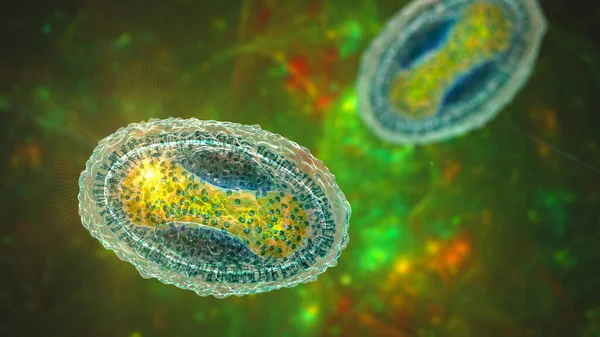Hibernating No More: Scientists Discover Potential Weapon Against Dormant Breast Cancer Cells and have made a significant breakthrough in understanding and potentially combating the dormant state of breast cancer cells, which can lead to recurrence years or even decades later. This research, published in the journal Cancer Discovery, focuses on the role of an enzyme known as G9a in the dormancy of breast cancer cells. The study found that inhibiting G9a can prevent cancer cells from becoming dormant and effectively kill cells that are already hibernating.
“Dormant cancer cells have been a major hurdle in achieving long-term cures for breast cancer. This discovery provides us with a new target for therapeutic intervention and offers a ray of hope for patients facing the threat of relapse.”
What Is The Mechanism Behind The Dormancy Of Breast Cancer Cells?
The exact mechanisms behind breast cancer dormancy are still under investigation, but scientists have identified several factors that likely play a role:

-
Disrupted communication: Communication between cancer cells and their surrounding environment (microenvironment) can become faulty. This can prevent the cells from receiving signals that would normally trigger growth and proliferation, causing them to enter a dormant state.
-
Cell cycle arrest: Dormant cancer cells may halt their cell cycle, essentially putting growth on hold. This can be caused by internal regulatory mechanisms within the cell or by signals from the microenvironment.
-
Microenvironmental cues: The microenvironment, which includes nearby blood vessels, immune cells, and connective tissue, can influence dormancy. Lack of blood supply or an environment that suppresses growth can force cancer cells into dormancy.
-
Stem cell-like properties: Some researchers believe that cancer stem cells, a subpopulation within tumors with self-renewal abilities, may be responsible for dormancy. These cells might be more adept at entering and exiting a dormant state.
-
Epigenetic modifications: Changes in gene expression that don’t alter the DNA code itself (epigenetics) may also play a part. These modifications could influence the dormancy state of cancer cells.
The Relationship Between Blood Supply And Tumor Mass Dormancy In Breast Cancer
Blood supply plays a critical role in tumor mass dormancy in breast cancer. Here’s how:
Limited nutrients and oxygen: Tumors require a constant supply of nutrients and oxygen to grow and proliferate. When a tumor outgrows its existing blood supply, it becomes nutrient-starved and hypoxic (low oxygen). This stressful environment can trigger dormancy as a survival mechanism for the cancer cells.
Angiogenesis vs. dormancy: Tumors can respond to limited blood supply in two ways:
- Angiogenesis: The tumor can stimulate the growth of new blood vessels (angiogenesis) to increase nutrient and oxygen delivery. This allows the tumor to resume growth and potentially become aggressive.
- Dormancy: If angiogenesis is unsuccessful or insufficient, the tumor may enter a dormant state. In this state, the cancer cells slow down their metabolism and cell cycle, essentially going into hibernation mode to conserve resources until conditions improve.
Tumor dormancy as a double-edged sword: While dormancy prevents immediate tumor growth, these dormant cells pose a significant threat. They can remain undetected for years, evading conventional therapies like chemotherapy that target rapidly dividing cells. Later, changes in the microenvironment or a new burst of angiogenesis can awaken these dormant cells, leading to relapse of the cancer
Therapeutic implications: Understanding the link between blood supply and dormancy offers potential avenues for treatment:
- Anti-angiogenic drugs: These drugs aim to block the growth of new blood vessels, starving the tumor and potentially pushing it towards dormancy. However, this approach alone may not be enough to eliminate dormant cells.
- Targeting dormancy: New research, like the one we discussed earlier, focuses on identifying vulnerabilities of dormant cancer cells. By targeting these vulnerabilities, we might be able to eliminate them even in a non-dividing state, preventing future relapse.
How Do Changes In The Tumor Microenvironment Affect The Balance Between Proliferation And Apoptosis In Breast Cancer?
The tumor microenvironment (TME) plays a crucial role in regulating the balance between proliferation (cell growth) and apoptosis (cell death) in breast cancer. Here’s how changes in the TME can tip the scales:
Promoting Proliferation:
- Growth factors: The TME can harbor a variety of cells like fibroblasts and immune cells that secrete growth factors like epidermal growth factor (EGF) and insulin-like growth factor (IGF). These factors bind to receptors on cancer cells, stimulating cell division and proliferation.
- Inflammatory signals: Chronic inflammation within the tumor can trigger the release of cytokines and chemokines that promote cell growth and survival. This can create a pro-tumorigenic environment that accelerates proliferation.
- Reduced oxygen (hypoxia): As a tumor grows, it can outpace its blood supply, leading to hypoxia. However, some cancer cells can adapt to this low-oxygen environment and even utilize it to their advantage. Hypoxia-inducible factors (HIFs) can be activated, promoting the expression of genes involved in cell survival, angiogenesis (new blood vessel formation), and metabolic reprogramming to favor proliferation despite limited oxygen.
Suppression of Apoptosis:
- Extracellular matrix (ECM): The ECM is a network of proteins and sugars that provides structural support and signaling cues to cells. In the TME, alterations in the ECM composition can make it harder for immune cells to infiltrate the tumor and induce apoptosis in cancer cells.
- Anti-apoptotic factors: Certain cells within the TME, like tumor-associated macrophages (TAMs), can secrete factors that inhibit apoptosis in cancer cells. These factors can prevent the programmed cell death that would normally occur if the cells are damaged or stressed.
Conclusion
Significant advancements are being made in understanding the complex interplay between cancer cells and their surrounding environment. From the role of blood supply in dormancy to the influence of the tumor microenvironment on proliferation and apoptosis, researchers are gaining valuable insights. These discoveries pave the way for the development of more targeted and effective cancer therapies that can not only attack actively dividing cancer cells but also eliminate dormant threats and disrupt the supportive ecosystem that fuels tumor growth. While there’s still much to learn, the future of cancer treatment appears brighter with this growing knowledge.
Also Read: The Hidden Dangers of Deep-Frying: More Than Just Weight Gain



